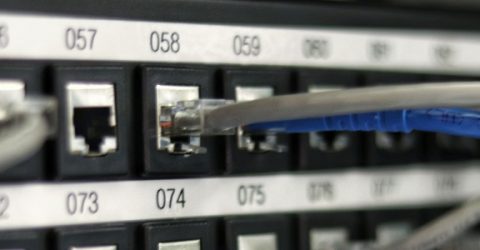What’s Ethernet over FTTC?

There’s a lot of jargon involved in broadband services. And much of it relates to the way data is delivered into our homes and offices.
Fibre to the Premises (FTTP) is the gold standard, where ultra-fast fibre optic broadband cables extend directly into our properties.
However, a more common connection method is Fibre to the Cabinet, or FTTC. In this model, fibre cabling stops at the broadband exchanges serving local neighbourhoods.
From here, old-fashioned copper telephone lines carry data for the final leg of its journey, via green pavement cabinets into individual homes and offices.
This copper cabling throttles the speed at which data can be transferred.
Openreach (the company responsible for upgrading copper phone lines) admits it will be a number of years before FTTC connections are all replaced with FTTP.
And that’s a problem for small businesses, whose employees increasingly rely on rapid connections and cloud storage to work, communicate and share information.
A number of workarounds have been developed in an attempt to boost achievable speeds over FTTC connections.
One of these is the relatively modern (and rather mysterious-sounding) Ethernet over FTTC.
High in fibre
Ethernet over FTTC is designed to improve the speed at which data can be piped to individual premises, and it’s normally marketed at commercial clients like small companies.
It replaces copper cabling between the local exchange and the green pavement boxes with an Ethernet cable.
That means data travels along fibre cabling for more of its journey, at much faster speeds.
Last month, TalkTalk Business launched an uncontested Ethernet over FTTC service.
The word ‘uncontested’ highlights the fact that additional capacity provided by the Ethernet connection is entirely yours.
Unlike FTTC and FTTP connections, other people’s usage won’t affect your achievable connection speeds.
These are a modest 20Mbps for downloads, though there’s scope to temporarily boost this to 76Mbps.
In normal circumstances, upload speeds are symmetrical at around 20Mbps – ideal for backing up server data every evening, or distributing large media files.
Latency (the delay between making a request and a response being received) is also reduced using this system of connectivity.
Isn’t FTTP better?
It is. But as we explained above, it’s not always available.
Indeed, it’s going to be several years before full fibre connections are available across the UK.
For small businesses stuck on frustratingly slow FTTC connections, Ethernet over FTTC offers a welcome performance boost.
Many companies provide these services, either based on TalkTalk Business’s platform or using their own proprietary services.
It tends to be more affordable than alternatives like fibre leased lines or Ethernet First Mile connections, which also have comparatively long installation dates.
FTTC Ethernet tends to come with stringent service level agreements, with providers promising to tackle faults within hours, rather than days.
That’s something many existing broadband customers can only dream of.






